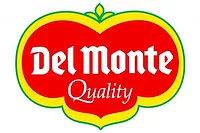Driving Away Debris
While good conveyor hygiene doesn’t end with clearing debris, it is an essential starting point for any sanitation effort on food related applications. Allowing debris build-up on a carryway or the interior components of your conveyor can lead to production delays, shutdowns or product recalls. Furthermore, costs of both labor time and water usage will doubtless rise as result of the neglect.
Just as a dentist might recommend a particular toothbrush or toothpaste for its effectiveness, equipping your conveyor with belts, sprockets and hinges designed for effective cleaning goes a long way toward raising hygienic standards. Intralox has tailored its EZ Clean family of components to meet specific sanitation challenges faced by food manufacturers, resulting in conveyor cleaning that is both thorough and cost-efficient (www.intralox.com).
In early 2006, Intralox will introduce its Series 850 SeamFree™ Minimum Hinge Flat Top belt. The belt is drive bar driven, preventing debris from being pressed into the hinge area. The “minimum hinge” feature assists in overall cleaning efforts, providing greater rod exposure with 66% fewer hinges than other belts. During cleaning, a patent pending flume design on the belt underside rapidly channels debris away from the belt edge.
Like its predecessor, the Intralox Series 800 SeamFree™ Open Hinge Flat Top belt, this new product will feature the widest seamless plastic module (36 inches/914 mm) available on the market. And, as with all belts in the EZ Clean family, it will be molded from non-porous, non-absorbent plastics which contain no pockets or recessed areas in the underside that can harbor debris.
Wet lab tests by Intralox report significant savings in labor costs and water usage. When using the Series 850 SeamFree™ Minimum Hinge Flat top belt in conjunction with the Intralox EZ Clean in Place system and EZ Clean Angled sprockets, food processors can expect to clean belts as consistently as manual methods in 65% less time and with 65% less water usage. The water conservation savings will also assist processors in regions of the world where energy costs are a major concern, reducing the amount of water needed to heat during a cleanup shift.
The Clean Belt Checklist
Gary Larsen, the Technical Support Director for Hygienic Services at Intralox, reminds food companies to do their homework when choosing a belt for hygienic applications. Not all modular plastic belts produce superior sanitation results. Larsen suggests using the following list of questions when reviewing potential suppliers to be sure their products are right for your operation:
1. Do the belt hinges open wide around the sprockets, but stay closed on the conveyor bed? Larsen notes that slotted open-hinge belt designs leave space for particles and scraps to accumulate. “This is why Intralox’s Series 800 Open Hinge Flat Top belts feature special Cam-link hinges, which are the most open of any modular plastic flat top belt on the market,” he says. “These hinges open wide around the sprockets to maximize cleaning access to the hinge area, but close on the conveyor bed to prevent debris from clogging the belt.”
2. Are the hinge openings large enough to allow spray to reach both the bottom and top surfaces? If not, water spray cannot reach all areas where soil or chemical residuals exist.
3. Do the belts allow catenary sag for better cleaning access, or must they be tensioned tightly against the conveyor surface? Catenary sag will enable better cleaning because the extra space allows more water spray to reach and loosen soils and scraps in the hinge area.
4. Do the belts include drive bars underneath to channel away water and debris? The benefit of underside drive bars, notes Larsen, is easy soil removal because water and debris are detoured to the outside of the belt and away from the production line.
5. Are the belts compatible with belt lifters? When lifting the belt, the conveyor should be off and locked out to prevent damage to the belt and possible injury to cleaning personnel. Belt lifting devices, either portable or frame mounted, lift the belt evenly across its width without causing damage to the belt. If the belt and the lifting method are not compatible, the belt will be damaged, resulting in a niche where soils and debris can hide.
6. Have the belts been tested for sanitation and cleaning under realistic plant conditions? It is important for easy-clean belt designs to be thoroughly tested to validate or improve their sanitation-friendly features. Larsen says, “For example, Intralox has a wet test facility dedicated exclusively to the scientific testing of plastic belt cleaning procedures and comparative testing of plastic and other belt technologies. The lab measures a number of cleanability factors, including water flow, cleaning time needed and water usage required, in order to realistically project how Intralox belts will increase sanitation success in a working plant environment.”
7. Will the belt company provide group seminars on sanitation issues and best cleaning practices? Notes Larsen, “The expertise of the belt company can help the processor go beyond basic sanitation goals. The Intralox Clean Team offers guidelines and seminars that advise food processors about sanitation friendly conveyor design elements like low belt tension configurations for improved cleaning access and devices that facilitate debris removal. By providing educational information, we help facilities reduce sanitation-related costs without sacrificing hygiene standards.”
Looking for quick answers on food safety topics?
Try Ask FSM, our new smart AI search tool.
Ask FSM →





